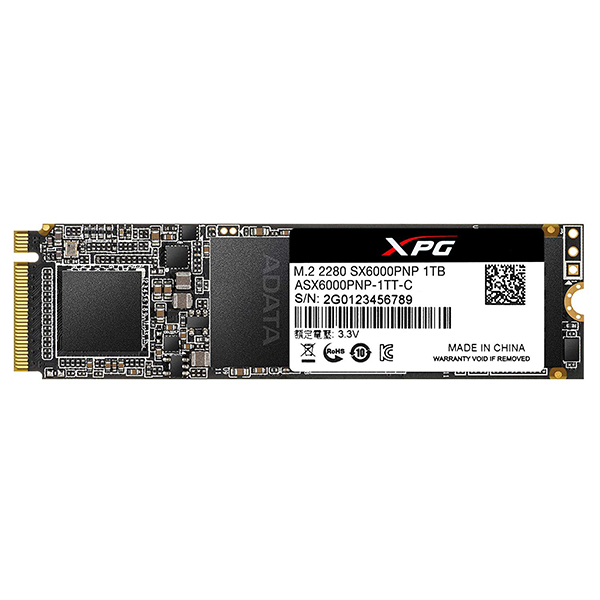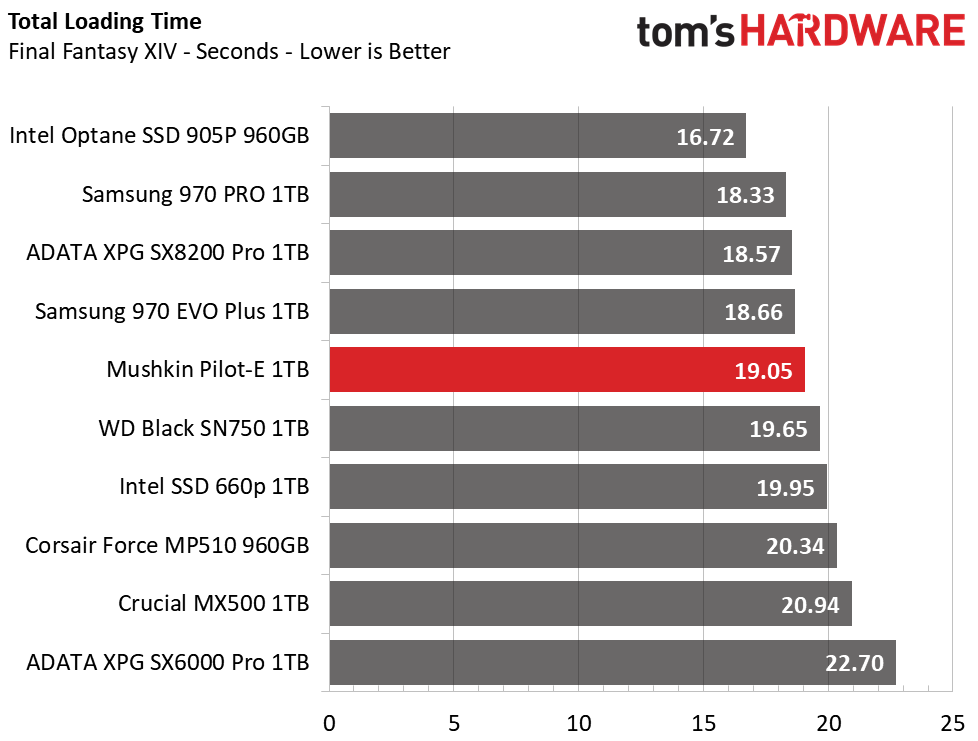Mushkin Pilot-E M.2 NVMe SSD Review: Taking Flight
Why you can trust Tom's Hardware
1TB Performance Results
Comparison Products
Today, the Pilot-E gets thrown into the ring with some of the top mainstream SSDs out there, as well as a few value options. From Samsung, we’ve included both the 970 PRO and 970 EVO Plus. Both utilize Samsung’s Phoenix NVMe controller, but the PRO features 64L MLC V-NAND while the EVO Plus has 9xL TLC V-NAND. Also included is WD’s Black SN750, boasting an in-house 8 channel NVMe controller and Toshiba BiCS3 64L TLC. Corsair’s Force MP510 represents one of the many Phison E12 based SSDs out and Adata’s XPG SX8200 Pro is the Pilot-E’s direct competitor. Additionally, we threw in Intel’s best value NVMe SSD, the 660p as well as its ridiculously expensive and fast Optane 905P. Finally, we threw in an Adata’s XPG SX6000 Pro and Crucial’s MX500 for comparison sake with lower-end SSD options.
Game Scene Loading - Final Fantasy XIV
The Final Fantasy XIV StormBlood benchmark is a free real-world game benchmark that easily and accurately compares game load times without the inaccuracy of using a stopwatch.
Silicon Motion’s NVMe controllers seem to have some of the fastest 4K read performance. Thanks to this, the Mushkin Pilot-E is able to attain a fast total load time of 19.05 seconds. This lands it 5th place overall and ranks it much faster than most SSDs.
Transfer Rates – DiskBench
We use the DiskBench storage benchmarking tool to test file transfer performance with our own custom 50GB block of data. Our data set includes 31,227 files of various types, like pictures, PDFs, and videos. We copy the files to a new folder and then follow up with a reading test of a newly-written 6.5 GB file.


When it comes to copying 50GB of files, Adata’s SX8200 Pro has the upper hand. With an average throughput of 749MBps, the Mushkin Pilot-E is 17% slower. Still, it is significantly faster than the Corsair Force MP510 and the entry-level competitors. Just as well, when reading back our 6.5GB test file, the Pilot-E’s read performance is nearly 200MBps slower than the Adata and ties the Intel Optane 905P. Overall, it ranks 6th on these charts.
Trace Testing – PCMark 8 Storage Test 2.0
PCMark 8 is a trace-based benchmark that uses Microsoft Office, Adobe Creative Suite, World of Warcraft, and Battlefield 3 to measure the performance of storage devices in real-world scenarios.

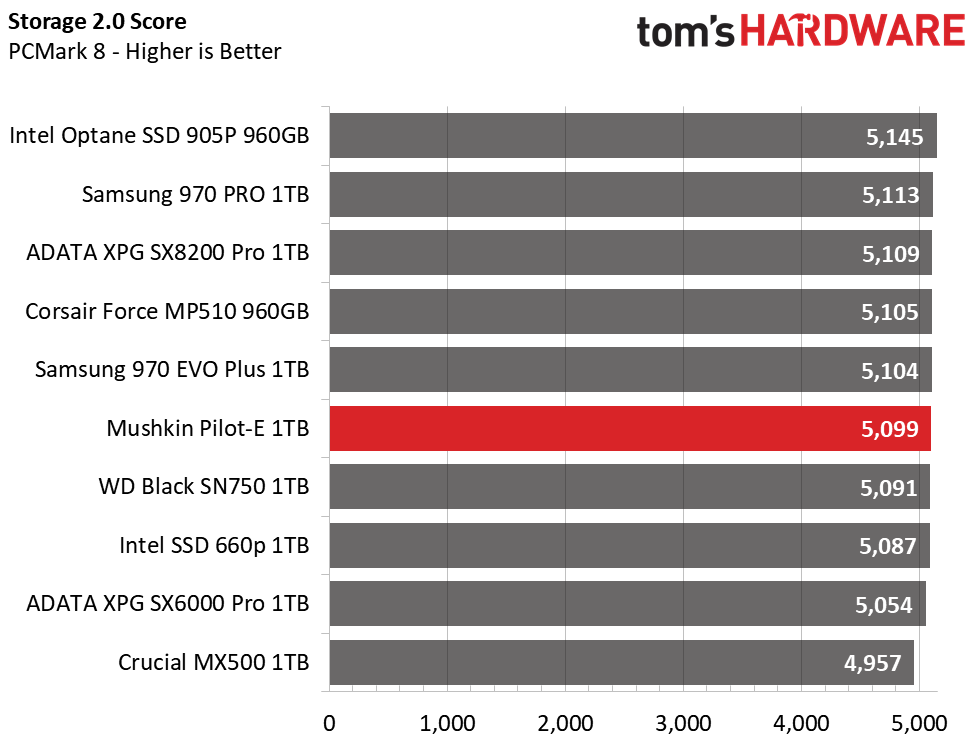
With a score of 5,099 points and an average throughput of 678MBps, the Pilot-E scores 6th place overall. Here it outranked the WD Black SN750 with its faster random performance, but the Adata, Corsair, and Samsung’s 970 series all outrank it. Overall, the Pilot-E will provide more than ample performance for your average home and office applications.
Get Tom's Hardware's best news and in-depth reviews, straight to your inbox.
Trace Testing – SPECworkstation 3
Like PCMark 8, SPECworkstation 3 is a trace-based benchmark, but it is designed to push the system harder by measuring workstation performance in professional applications. The full suite consists of more than 30 workloads, but we've opted to only run the storage benchmark which uses only 15 of them and categorizes the results into 5 market segments for scoring: Media & Entertainment, Product Development, Life Sciences, Energy, and General Operations.

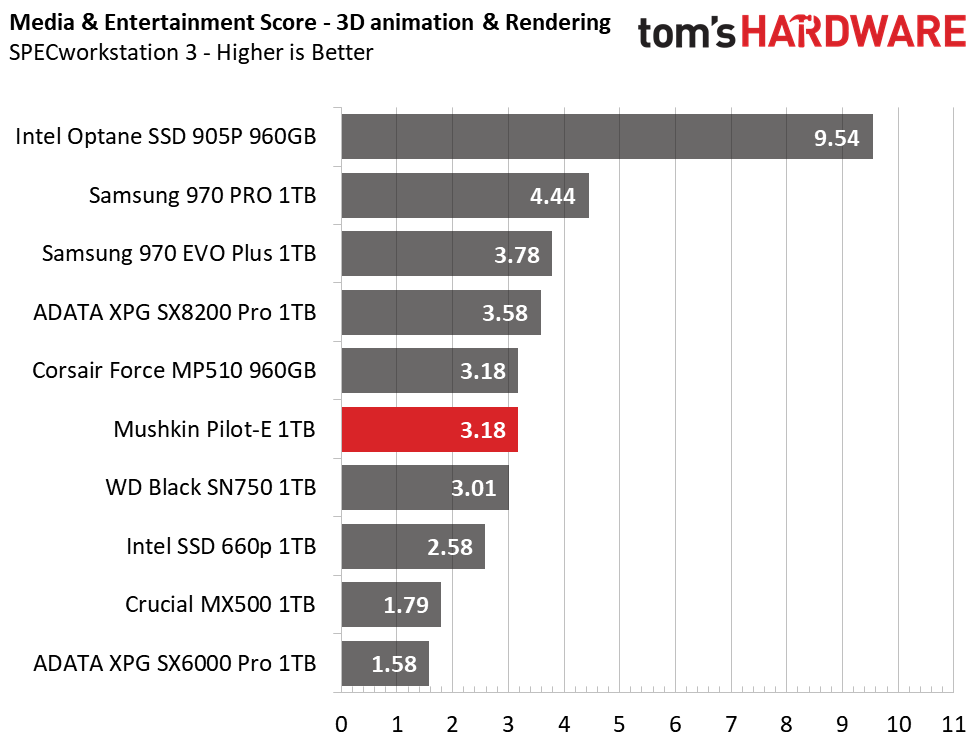
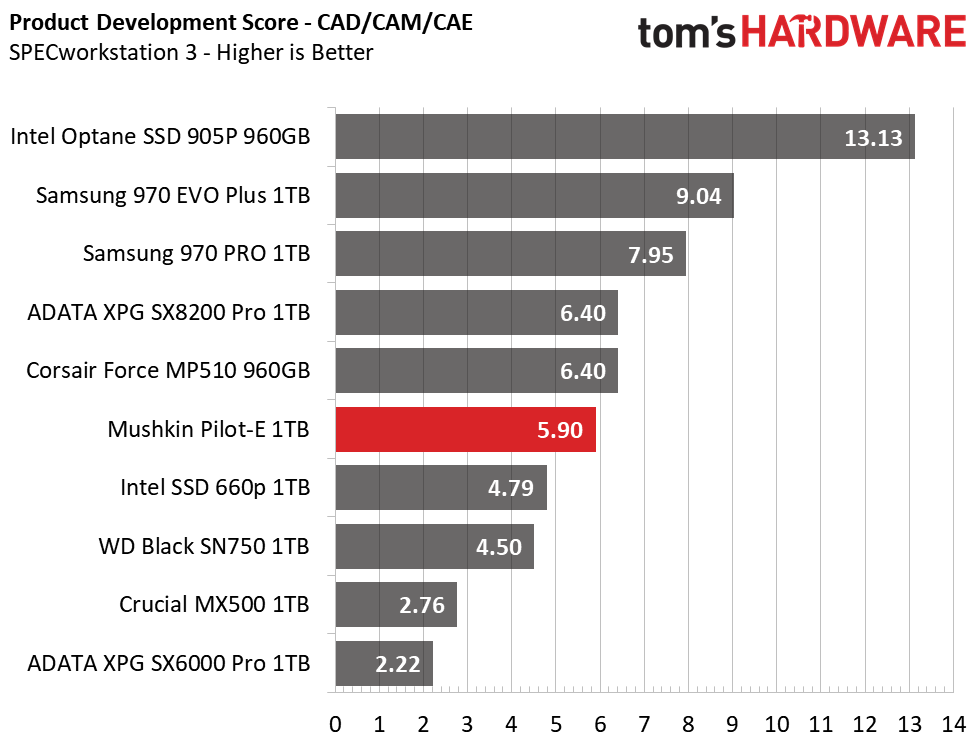
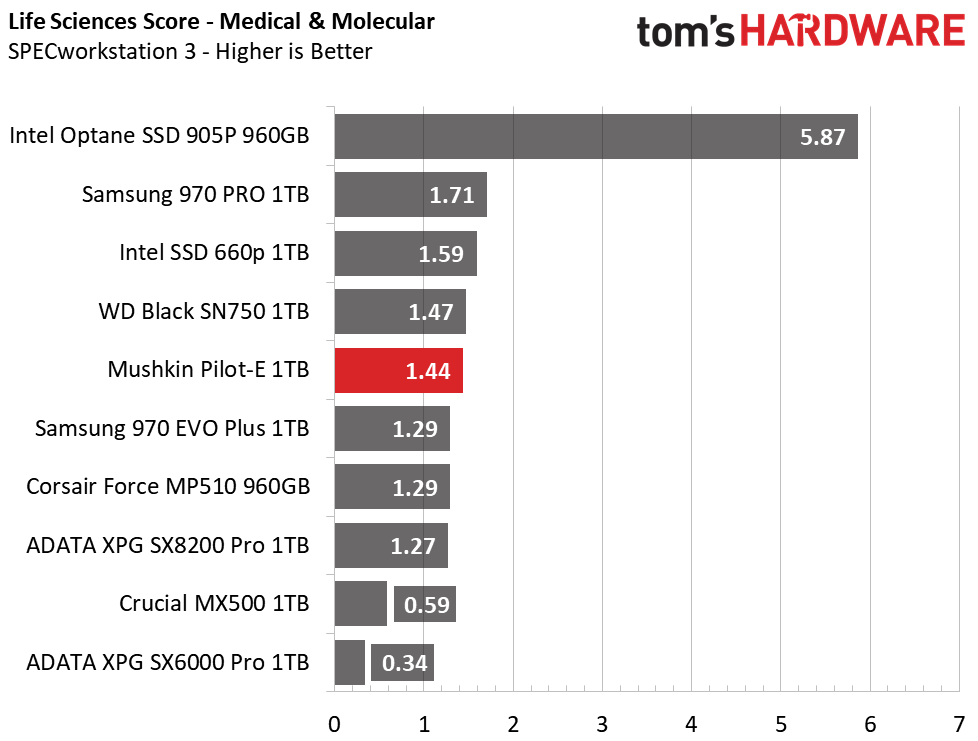
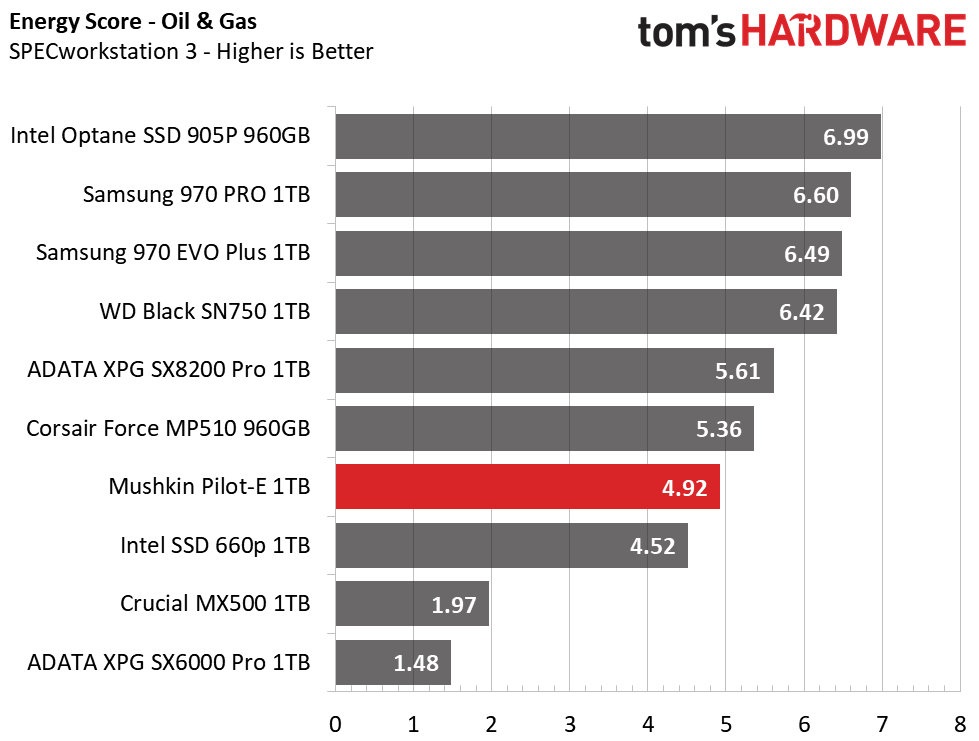
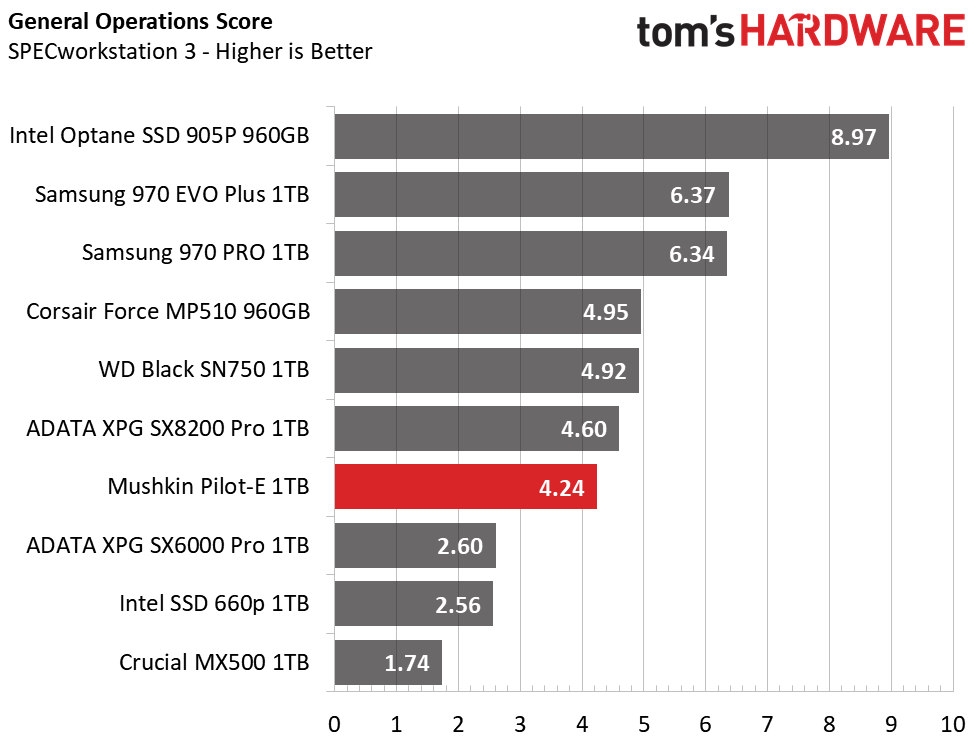
Intel’s Optane SSD 905P blows all its competitors out of the water in this test. With its ultra-low latency memory, nothing can touch it. Here, Mushkin’s Pilot-E surpasses the WD Black SN750 in application performance, though this time by just a hair. With a final score of 3.47 points, it will provide adequate performance for workstation use. But the Adata XPG SX8200 Pro, the Corsair Force MP510, and the Samsung drives all prove to be slightly better for the task.
Synthetic Testing - ATTO
ATTO is a simple and free application that SSD vendors commonly use to assign sequential performance specifications to their products. It also gives us insight into how the device handles different file sizes.

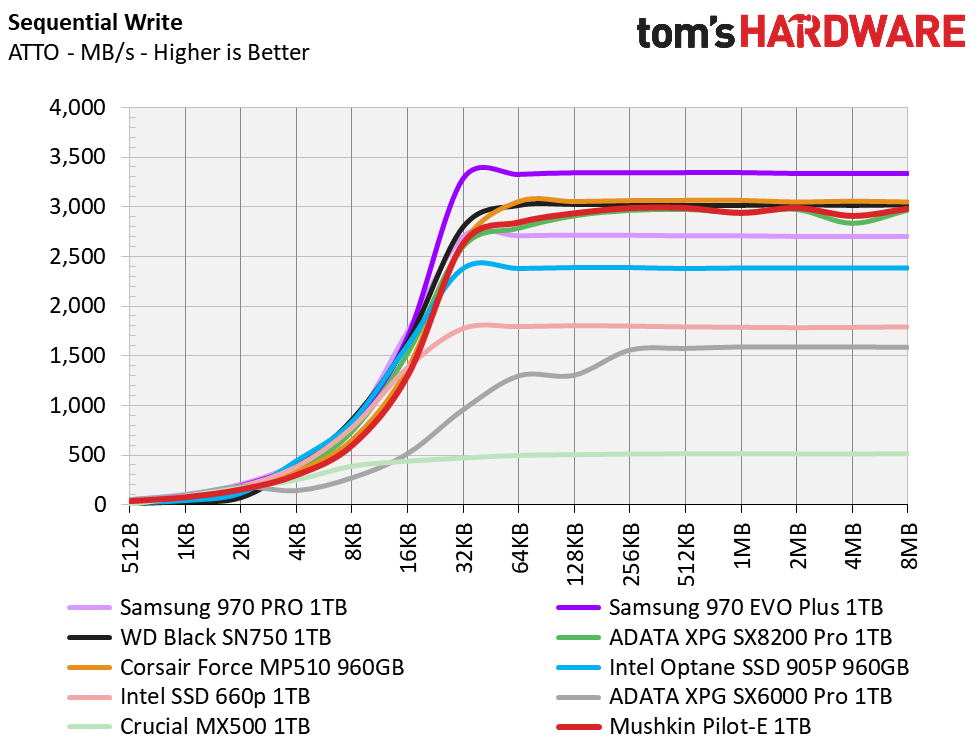
Overall, read and write performance lags behind slightly compared to the test pool’s average, but that doesn’t stop Mushkin’s Pilot-E from hitting speeds of 3.35GBps read and 3.00GBps write in ATTO.
Synthetic Testing - iometer
iometer is an advanced and highly configurable storage benchmarking tool that vendors often use to measure the performance of their devices.
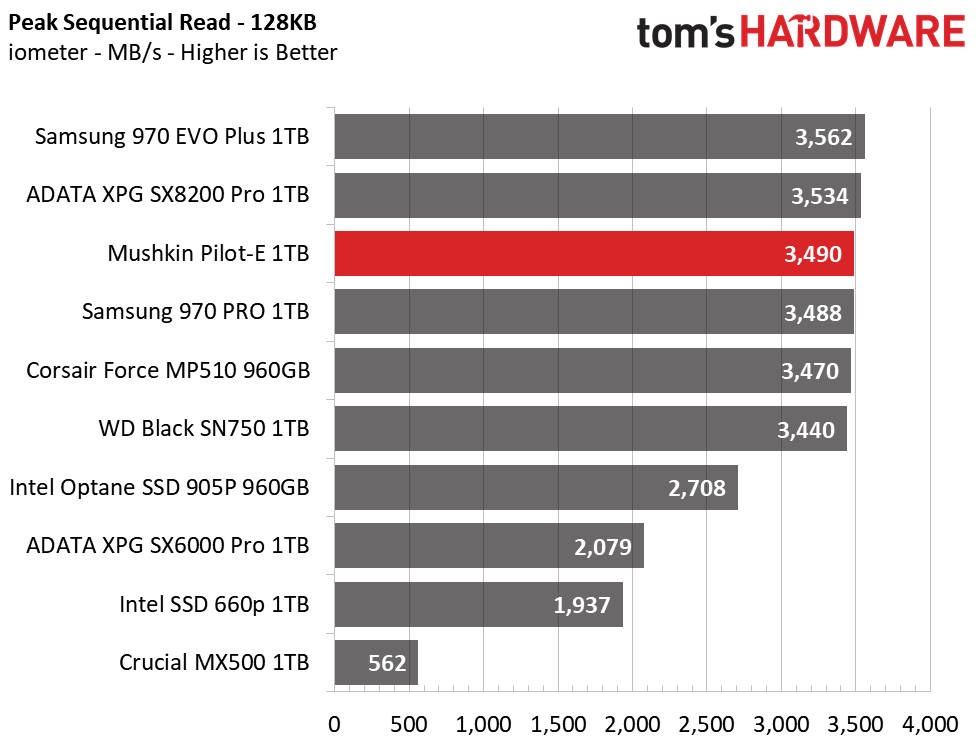

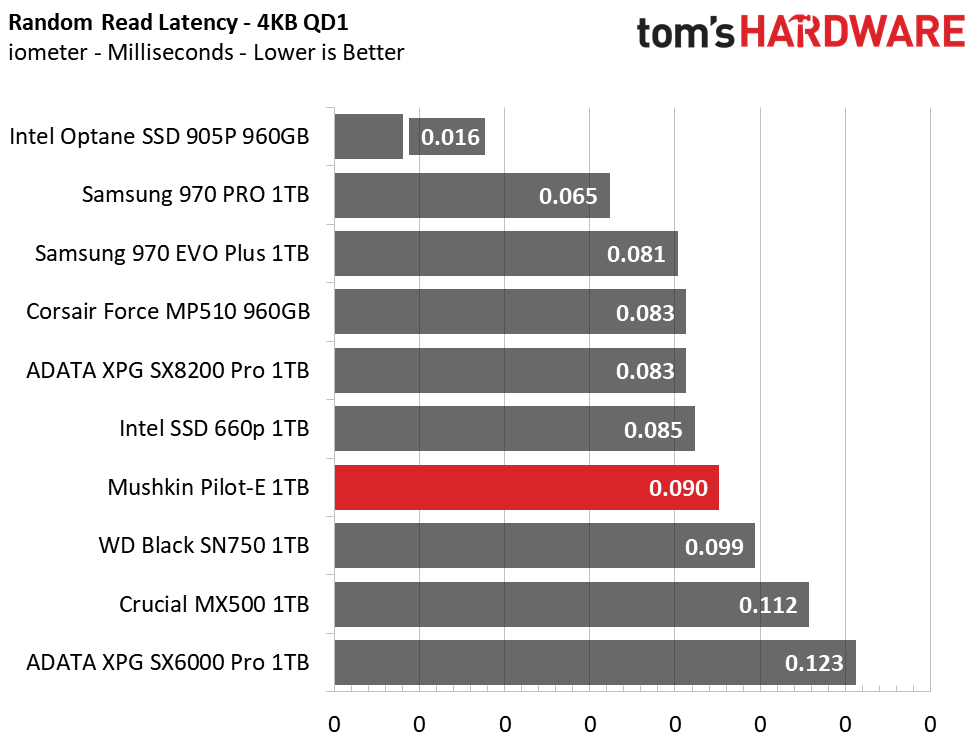
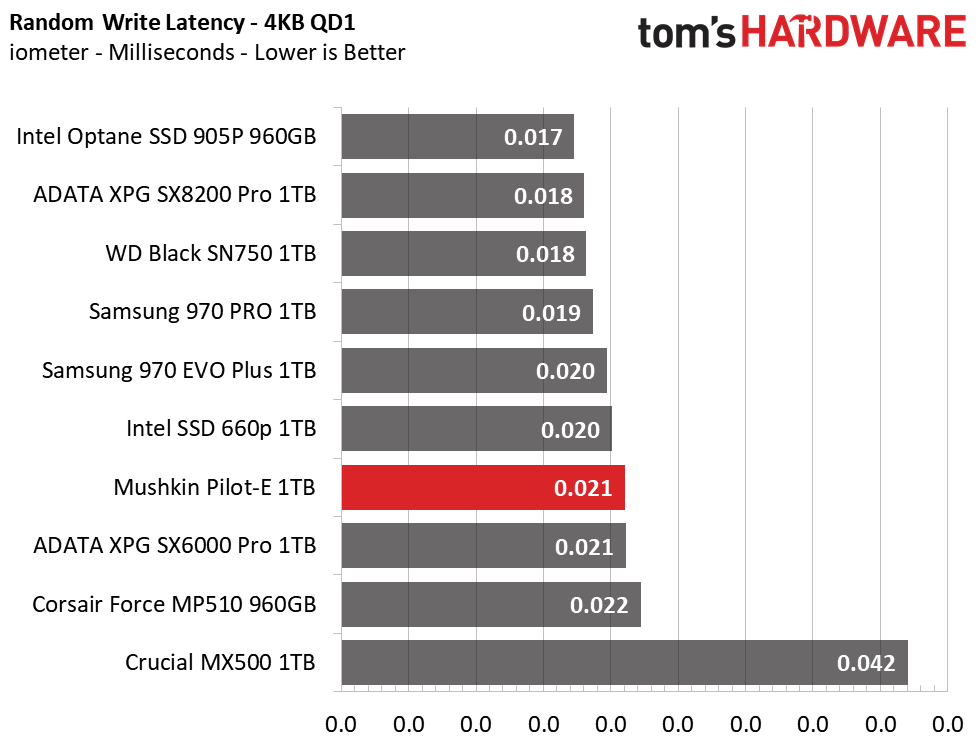
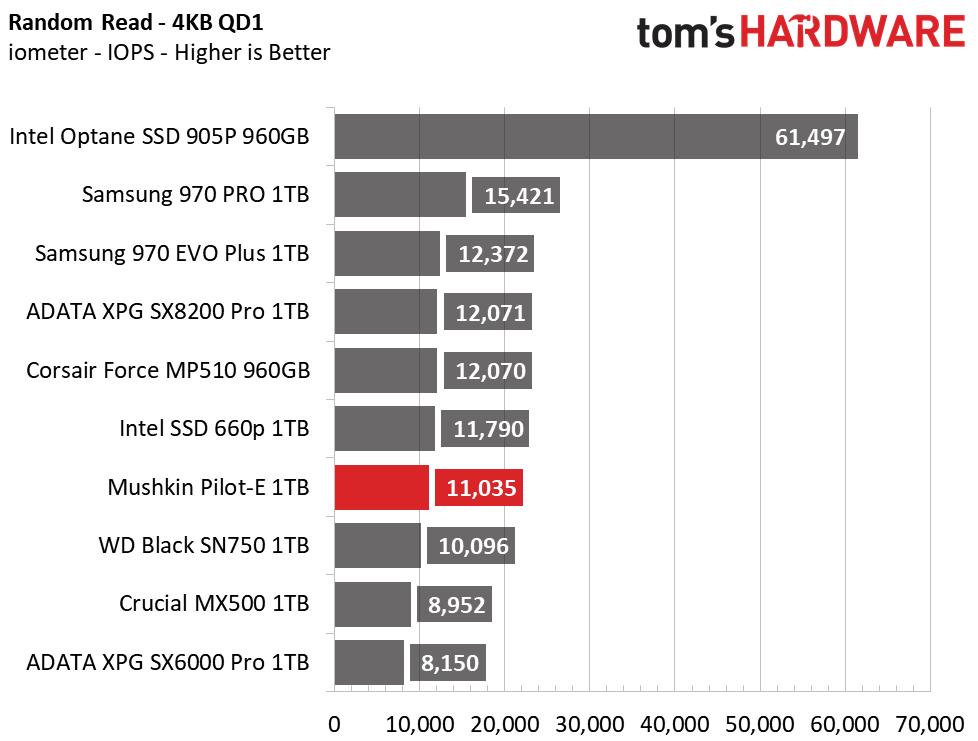
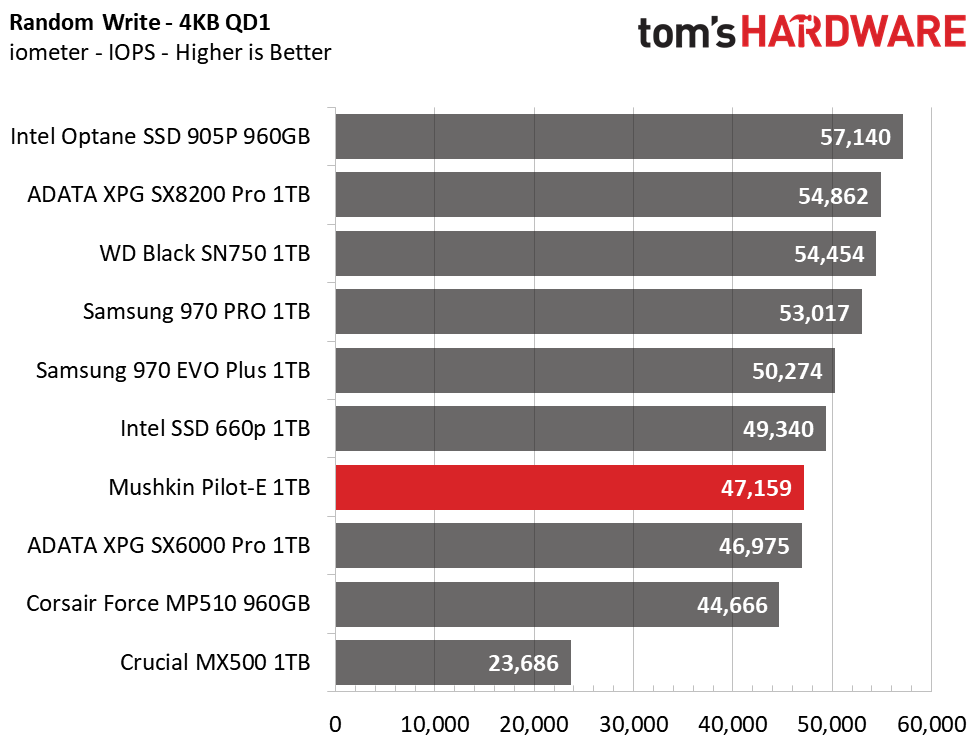
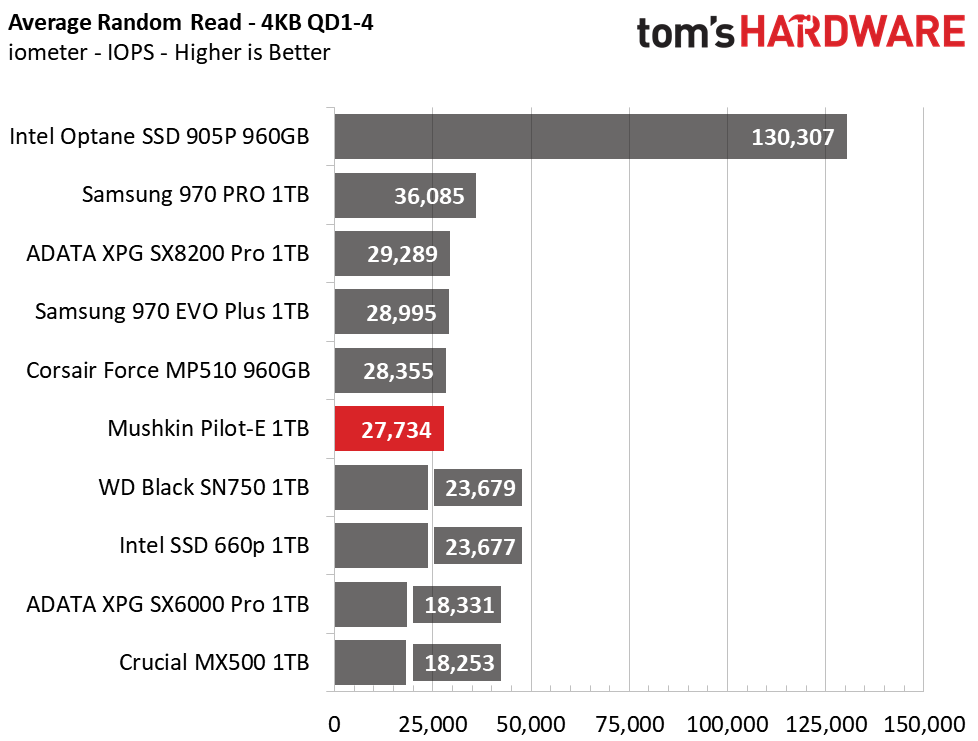
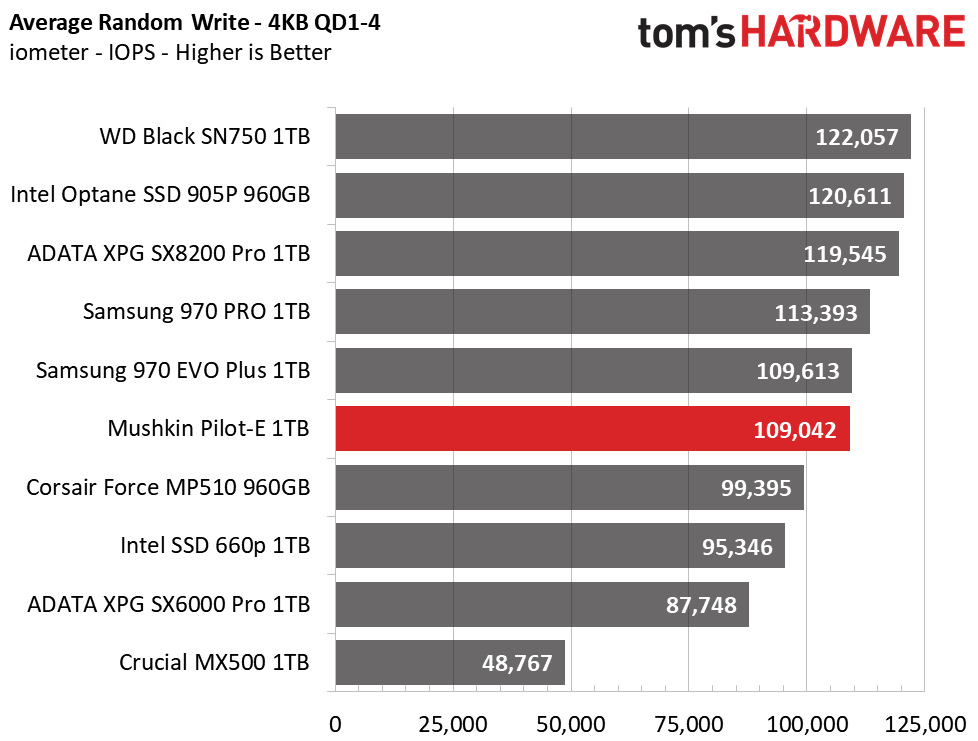


Mushkin’s Pilot-E delivered competitive read and write results when testing it with iometer. Under sequential tests, the SSD averaged about 3.5GBps read and 3GBps write throughput. 4K random response times were quite fast too. But once again, the Adata XPG SX8200 Pro shows that there is still some room for improvement. Averaging the SSD’s queue depth 1-4 performance, we can see that it outranks the WD Black, Intel 660p, and SX6000 Pro, but the SX8200 Pro gets in an additional 1,500 IOPS. As well, under peak load, the SX8200 Pro can deliver almost 100,000 more read IOPS and the Pilot-E.
Sustained Sequential Write Performance
Official write specifications are only part of the performance picture. Most SSD makers implement a pseudo-SLC cache buffer, which is a fast area of SLC-programmed flash that absorbs incoming data. Sustained write speeds can suffer tremendously once the workload spills outside of the pSLC cache and into the "native" TLC or QLC flash. We use iometer to hammer the SSD with sequential writes for 15 minutes to measure both the size of the pSLC buffer and performance after the buffer is saturated.

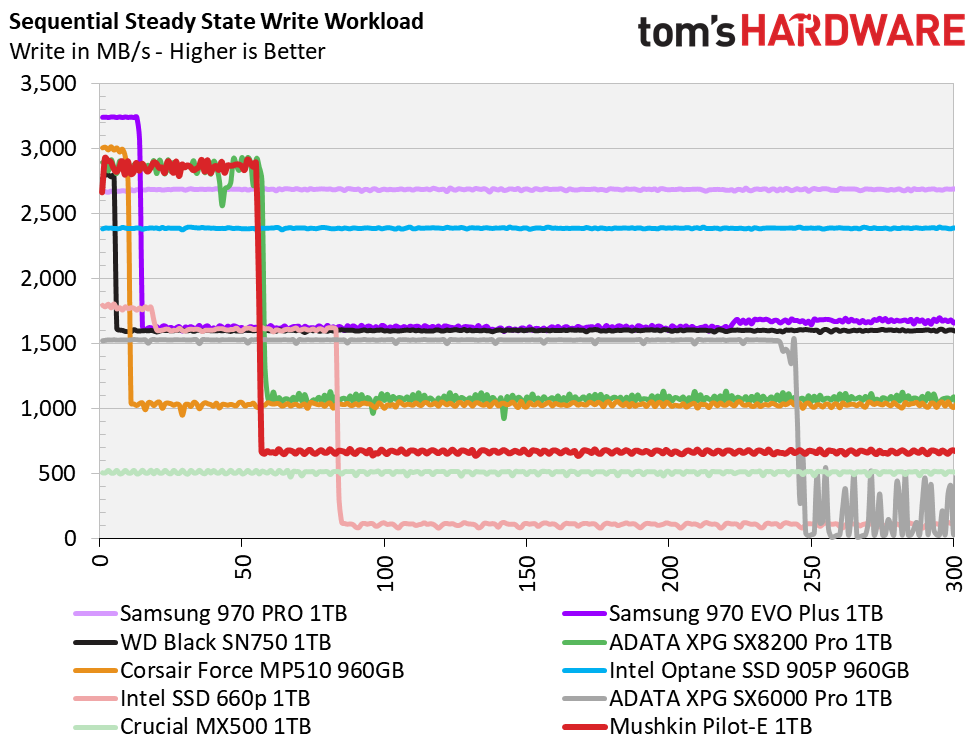

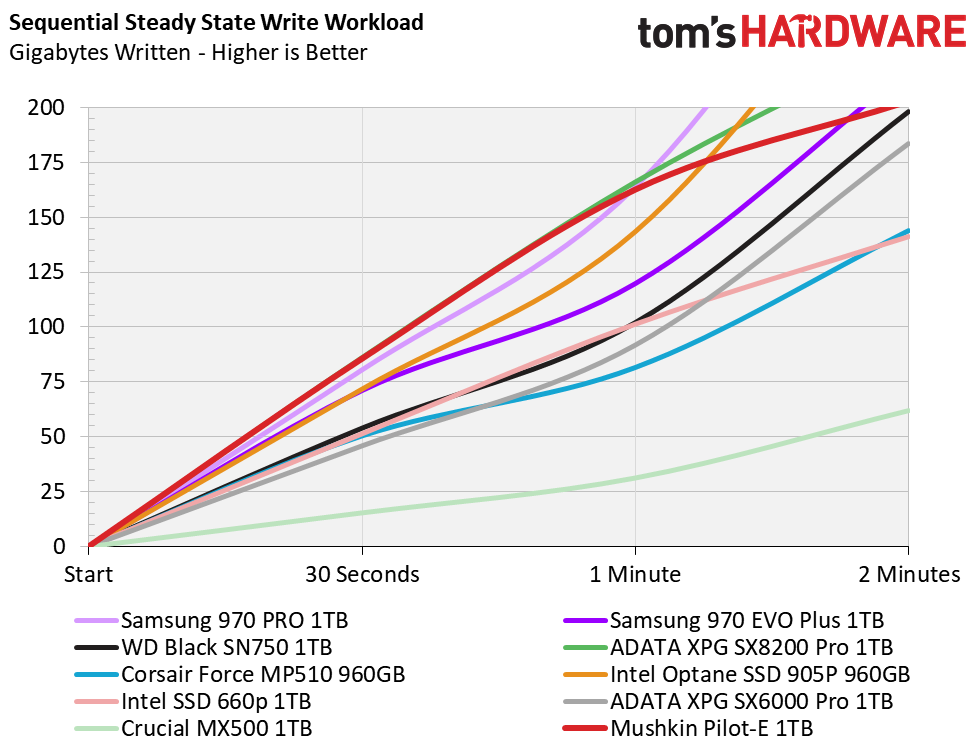
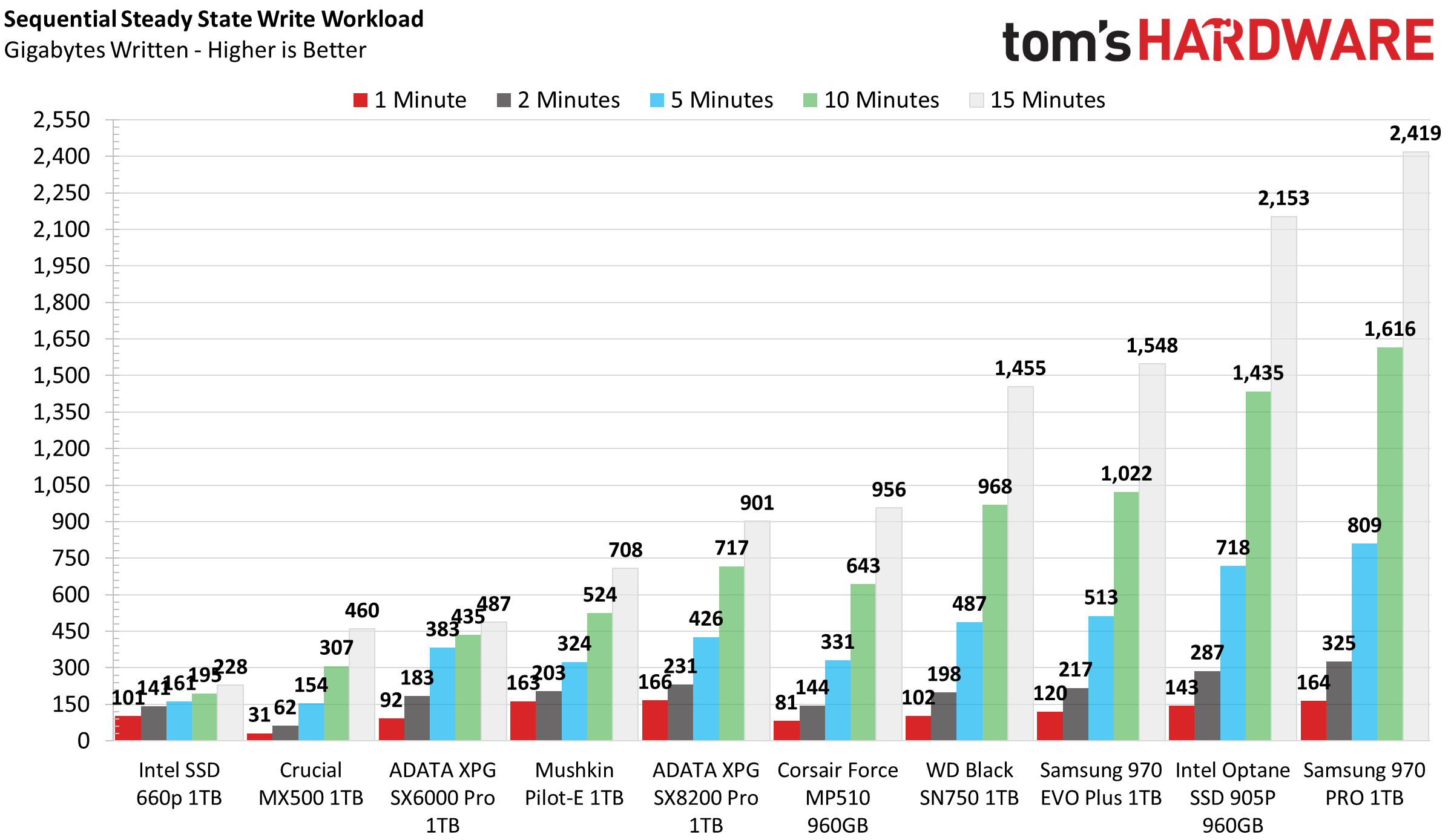
The Pilot-E’s SLC write cache isn’t as large as Adata’s. While both drives are neck and neck writing over 160GB of data within only a minute, after that, the SX8200 Pro starts to leave the Pilot-E behind. While the Adata maintains over 1GBps write speeds once the cache fills and then 615MBps at its slowest, the Pilot-E degrades to an average of 675MBps and then later just over 400MBps as it folds over SLC data to TLC cells. Overall, this write performance should not leave you disappointed for most day-to-day use.
Power Consumption
We use the Quarch HD Programmable Power Module to gain a deeper understanding of power characteristics. Idle power consumption is a very important aspect to consider, especially if you're looking for a new drive for your laptop. Some SSDs can consume watts of power at idle while better-suited ones sip just milliwatts. Average workload power consumption and max consumption are two other aspects of power consumption, but performance-per-watt is more important. A drive might consume more power during any given workload, but accomplishing a task faster allows the drive to drop into an idle state faster, which ultimately saves power.
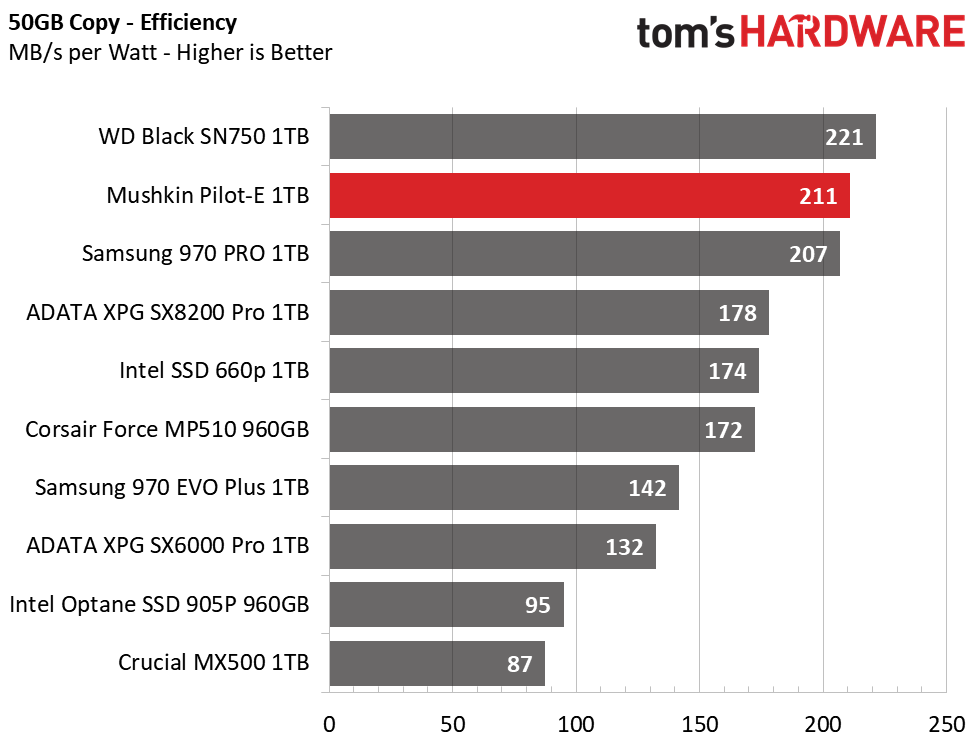
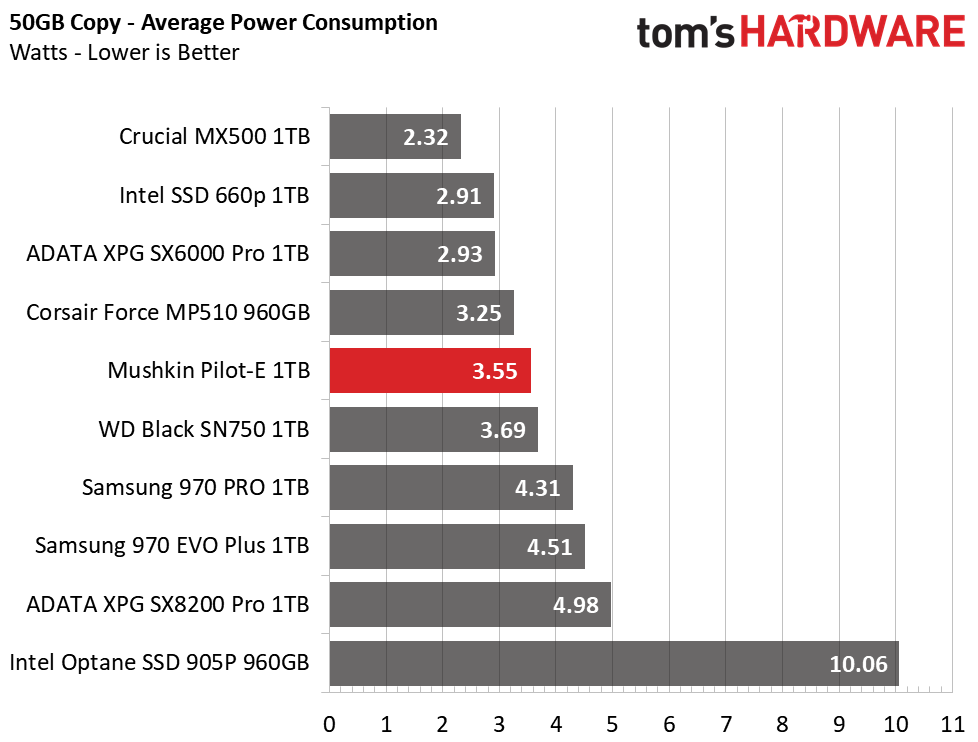

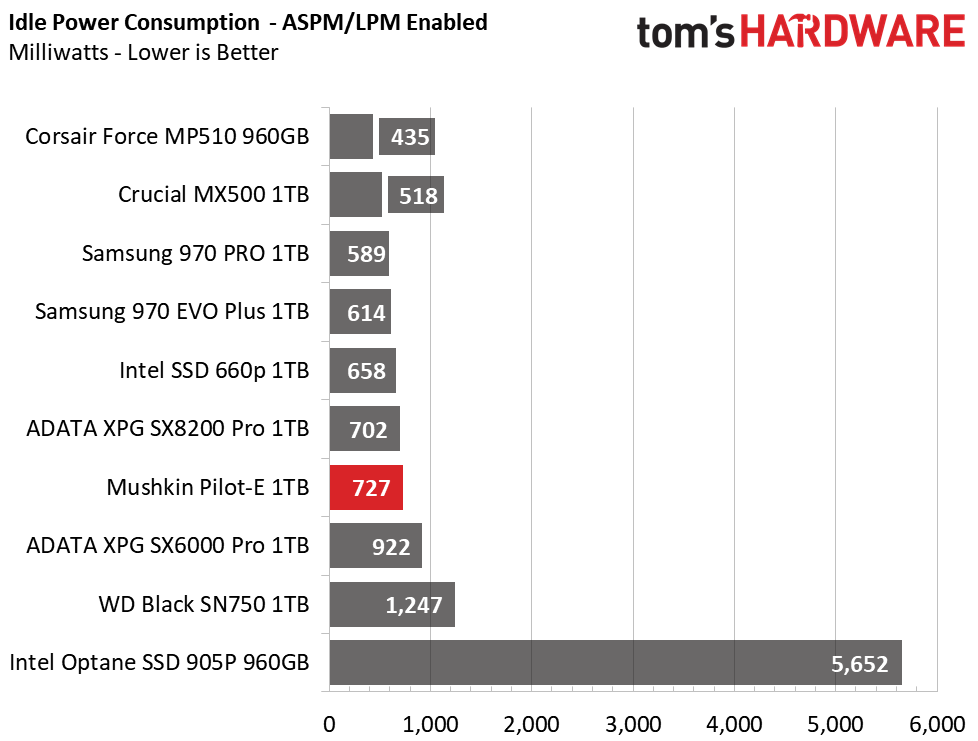
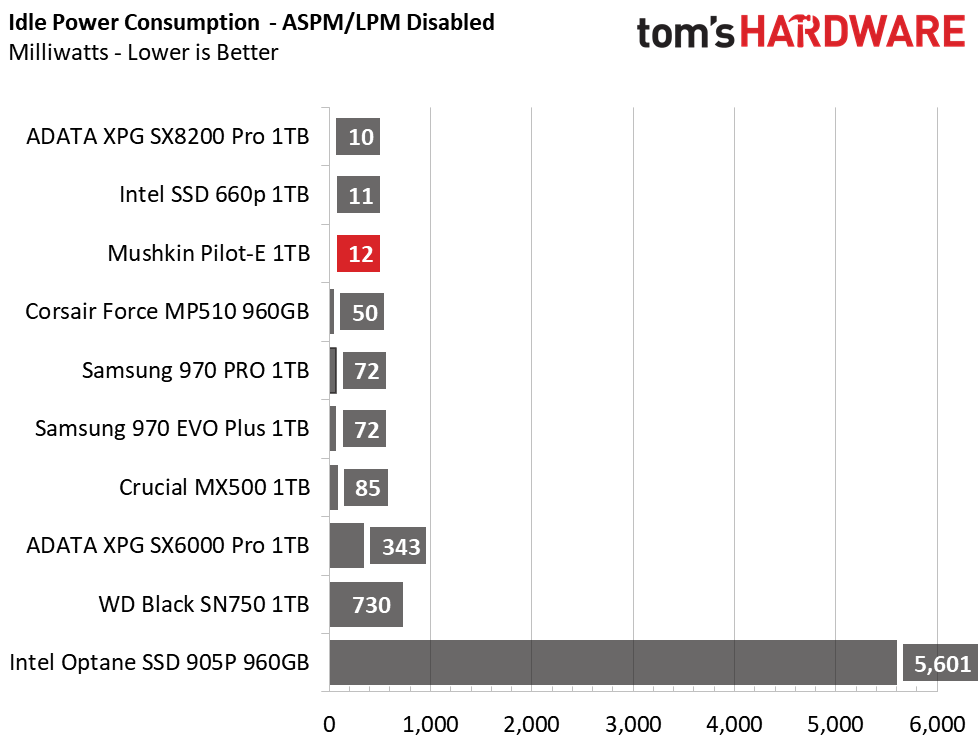
The Pilot-E sips very little power at idle, just 12mW when ASPM is enabled in our BIOS, similar to other Silicon Motion based SSDs. It wasn’t quite as fast as the Adata XPG SX8200 Pro during our file copy test, but on average it consumes less power, which propels the Pilot-E to second place on our efficiency chart. Unlike the Adata, this Mushkin drive isn’t wasting power trying for the best performance; it's quite balanced.
MORE: Best SSDs
MORE: How We Test HDDs And SSDs
MORE: Best External Hard Drives and SSDs

Sean is a Contributing Editor at Tom’s Hardware US, covering storage hardware.

